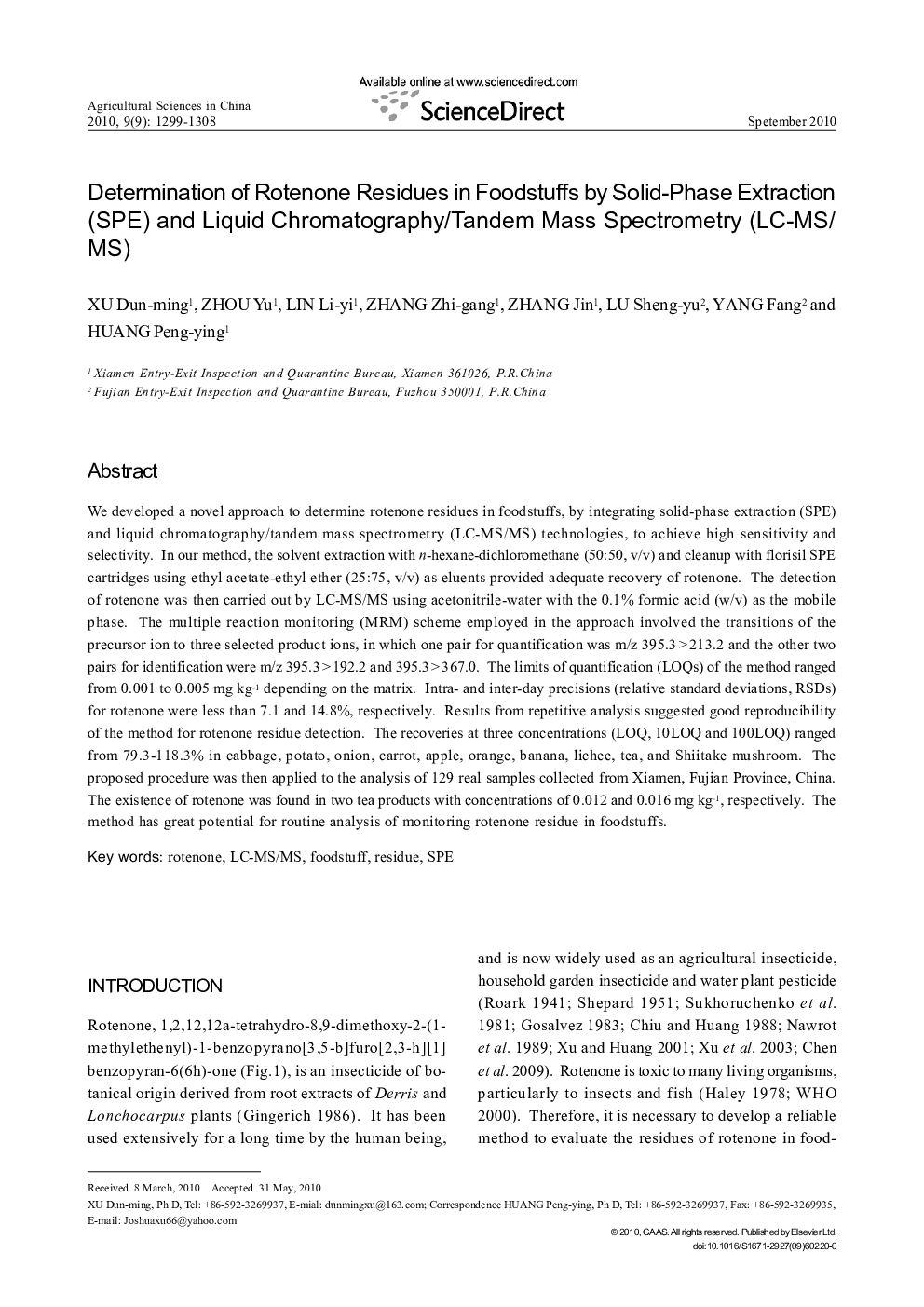| کد مقاله | کد نشریه | سال انتشار | مقاله انگلیسی | نسخه تمام متن |
|---|---|---|---|---|
| 4490065 | 1317751 | 2010 | 10 صفحه PDF | دانلود رایگان |

We developed a novel approach to determine rotenone residues in foodstuffs, by integrating solid-phase extraction (SPE) and liquid chromatography/tandem mass spectrometry (LC-MS/MS) technologies, to achieve high sensitivity and selectivity. In our method, the solvent extraction with n-hexane-dichloromethane (50:50, v/v) and cleanup with florisil SPE cartridges using ethyl acetate-ethyl ether (25:75, v/v) as eluents provided adequate recovery of rotenone. The detection of rotenone was then carried out by LC-MS/MS using acetonitrile-water with the 0.1% formic acid (w/v) as the mobile phase. The multiple reaction monitoring (MRM) scheme employed in the approach involved the transitions of the precursor ion to three selected product ions, in which one pair for quantification was m/z 395.3 > 213.2 and the other two pairs for identification were m/z 395.3 > 192.2 and 395.3 > 367.0. The limits of quantification (LOQs) of the method ranged from 0.001 to 0.005 mg kg−1 depending on the matrix. Intra- and inter-day precisions (relative standard deviations, RSDs) for rotenone were less than 7.1 and 14.8%, respectively. Results from repetitive analysis suggested good reproducibility of the method for rotenone residue detection. The recoveries at three concentrations (LOQ, 10LOQ and 100LOQ) ranged from 79.3-118.3% in cabbage, potato, onion, carrot, apple, orange, banana, lichee, tea, and Shiitake mushroom. The proposed procedure was then applied to the analysis of 129 real samples collected from Xiamen, Fujian Province, China. The existence of rotenone was found in two tea products with concentrations of 0.012 and 0.016 mg kg−1, respectively. The method has great potential for routine analysis of monitoring rotenone residue in foodstuffs.
Journal: Agricultural Sciences in China - Volume 9, Issue 9, September 2010, Pages 1299-1308